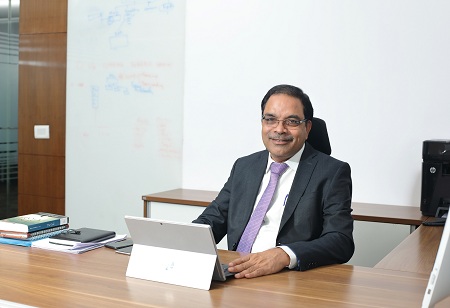In an interaction with Industry Outlook, Arun Misra, Chief Executive Officer, Hindustan Zinc Limited. shares his views on adoption of new technologies in mining industry and how mining companies can address the challenges involved.
How do you see the current evolution of industrial mining in the era of Industry 4.0? How is the adoption of new technologies driving the operational efficiency of mining companies?
Traditionally mining industries have been slow in adopting newer technologies, however depleting resources and increased complexities in mining has become a driving force to adopt and utilize the newer technologies. The adoption under industry 4.0 has significantly increased because of its ease of implementation, computing efficiency with enhanced data flow & coverage. Now mining industries are having much smarter & connected machineries which yield more at lower cost, enable higher safety standards and better transparency of operations which directly lead to operational efficiency. At Hindustan Zinc, we believe in a High-Performance culture which I feel can be achieved through Digital Transformation. Digital transformation and adoption of technologies will provide a foundation for us to support our next phase of growth.
What are the major challenges faced by mining companies in implementing digital technologies in their operations? How can they address those challenges?
Implementation of digital technologies in the mining industry is slightly difficult just because of the complexities and intricacies of our operations. Some challenges faced by the industry are the availability of communication network - both in underground mines and remote sites, lack of integrated solution providers and change management. While off-the-shelf solutions like Fleet Management System are common in open cast mines where setting up the data network is easier, in underground mines like ours it is much more complex. Moreover mines with equipment of different manufacturers with different IOT capabilities face further difficulty in transmitting and integrating online data. We need active collaboration of Indian technology providers and research institute to develop solutions that suit the need of mining industries. This can drastically change the way technology and digitalization can be implemented in mining operations and the ease that the solutions offer.
Drone technology is proving to be an effective way of reducing labour cost and improving data collection. How do you see its implementation in the mining sector in India?
Drone technology helps in periodic inspection of very remote sites and facilities like pipelines, structures at a height and provides quick measurement, video input to take necessary actions. At Hindustan Zinc, we are using this technology for scanning of stopes in UG mines, doing stockpile measurement and several other critical inspections. Not only beneficial for operational efficiency, drone monitoring will also improve safety standards as this has the potential to further support remote operations without actual human interventions.
Artificial Intelligence is being used by miners to analyse huge amounts of exploration data. How can AI be used by miners to make informed decision with precision?
Definitely, with increased computing power use of available algorithms have become possible to deliver the results in much lesser time with increased accuracy. Application of AI extends across the mine value chain including exploration, predictive maintenance, mineral processing for improved recoveries and creating digital twin for plants. With data being available on a single platform, we have moved further from an analytics drive of not just predictive controls but developing business operation models for every part of a unit operation. This way, we can go beyond data analysis with a system based approach and automation.
How can 3D modeling be used while construction of new mines to gain better information about the mine and enhance worker safety?
In overall sense 3D modelling of a mine is the backbone & serves the basis of mine design criteria. This helps ensure overall mine health with sustained production rates over Life Of Mine Plan period. Among a host of benefits, 3D modelling provides holistic picture of high & low stress zones of the mine upon set sequence of extraction, helps in planning permanent infrastructure (such as footwall drives/ore passes/shaft etc.), fixing stope dimensions & mining block heights, and in designing ground support activities and operations.
With the evident move towards automation, we are seeing an increasing use of autonomous vehicles, drillers and haulage systems by mining companies. What is the ideal approach for automation in this field and to what extent can it be done?
The most important aspect is to have the entire relevant infrastructure in place on sustainable basis to support such automation. A study must be conducted to address the gaps between existing processes and new ways of working. This will cover reskilling of workforce, revision of SOPs and proper handholding with change management. The extent of deployment depends on the method of mining, digital maturity of mines and economic viability, however relevant autonomous solutions can be deployed across mining value chain. For automation to be successful in the first place, we need a pool of bright and talented minds that can execute and implement this automation drive.
It is being said that IoT has the potential of connecting all the components of the mining value chain. How do you see the scope of IoT application in mining?
There is an immense potential of IOT application in mining. By leveraging IOT technology, the deployment of right use cases with clear business impact can transform the mining industry. IoT application can be implemented across the integrated mine value chain covering HSE, exploration, mine development, ventilation, dewatering, ground support, power management, ore sorting/tracking, mineral processing, predictive maintenance, procurement, logistics, quality assurance etc.
